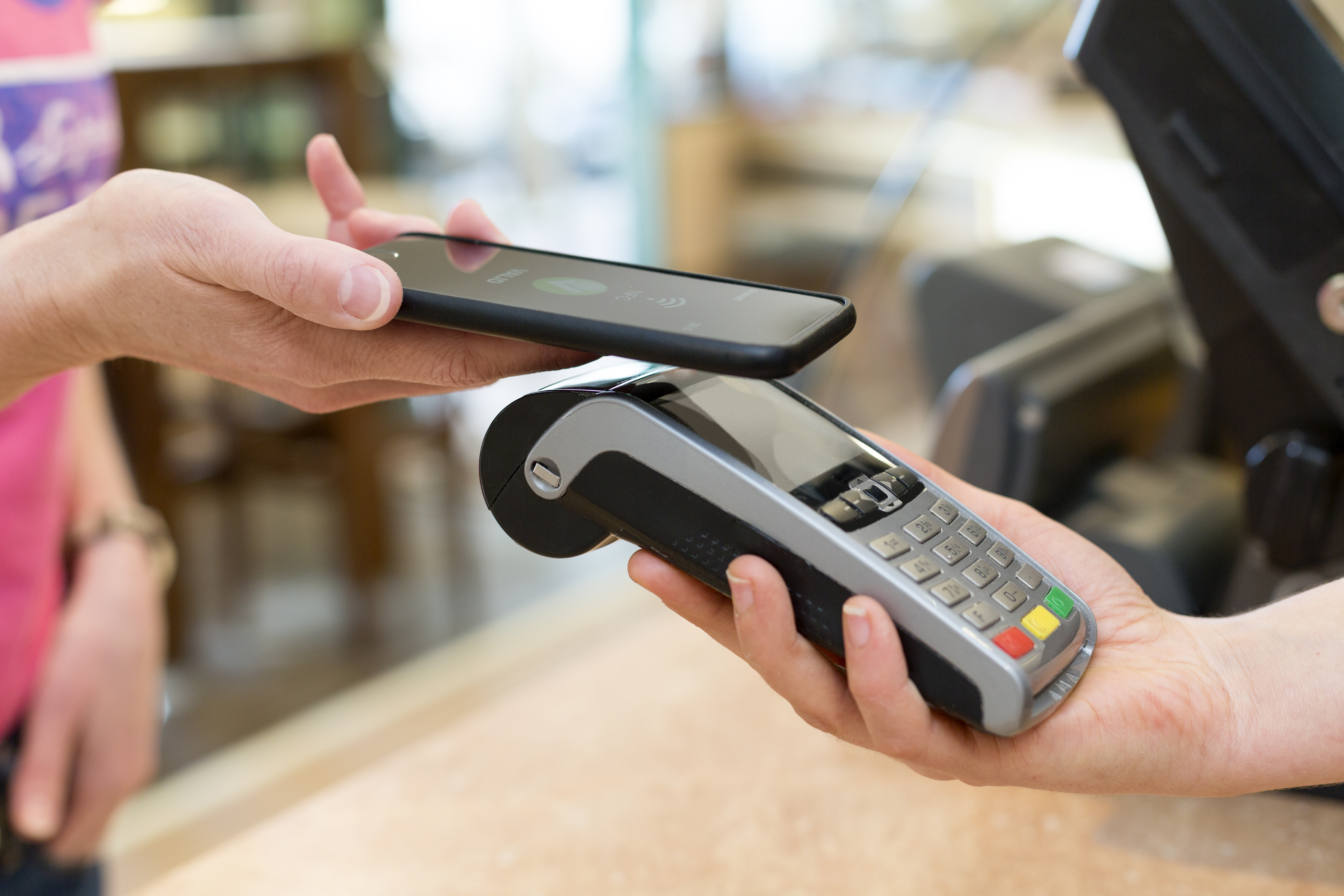Online retailers and stores are adapting to the new payment channels, making it no longer necessary to carry around bills and coins –not even cards. All you need is a smartphone with NFC, although there are already even options that work without using this technology. Traditional payment services could become irrelevant in the medium term and be replaced by payment solutions based on cellphones.
This is why the leading banks have developed their own mobile payment apps. BBVA launched its app in 2013, and since then over seven million people have downloaded BBVA Wallet. In Spain, almost 36% of people with mobile payment apps already had them installed in their smartphone in 2016. But what other platforms are competing to spearhead this transformation worldwide?
Google Pay
Android Pay arrived in Spain in July 2017 with the mediation of BBVA.
In February 2018 it was renamed and became Google Pay: Google’s digital wallet
A digital wallet is an application we install in our smartphones to allow us to keep the data we need to make financial transactions securely. It also sends this information via NFC to contactless terminals when necessary.
Google Pay accepts BBVA cards. When they are added to the app, it asks the bank for a token which unequivocally represents each card registered.
The token is stored in an encrypted form and does not directly contain the card information, but a particular code. Only the bank knows which card is identified with which code, which adds an extra layer of security to the encryption of the information in the token itself.
Even if the token were to be intercepted and decrypted, it could not be used to make fraudulent transactions, as only the bank is able to match the code contained in the token with the data for the corresponding card.
When we use Google Pay to pay in a retailer, we first have to unlock the smartphone with our PIN or fingerprint, then we need to wave it over the payment terminal so the wallet sends the corresponding token to the store’s terminal. The store’s payment terminal then sends the token obtained to the bank, which finally accepts or denies the transaction.
The great improvement of this payment method is that it reduces the time it takes to make a transaction. It also offers additional security benefits compared to other more traditional payment methods.
The encryption of the token, the prior locking of the smartphone (which requires the use of a security code or fingerprint to access the eWallet), and the dissociation of the information contained in the token and the real card data… all these security measures make the transactions more secure. It is therefore not surprising that mobile payments are progressively displacing debit and credit cards due to their security and simplicity.
Google Pay is now well established and has over 24 million active users. However, its future is even more promising than its present. With a user base that is constantly growing and a series of new developments including the option of saving boarding passes and making peer-to-peer transfers, there is no doubt that Google Pay will continue to be leading actor in the mobile payments sector. It is worth bearing in mind.
Bizum
Bizum is an instant account-to-account payment solution via cellphone. It is interconnected with a large number of banks and does not require the recipient’s account number to make a transfer, only a telephone number. BBVA has been part of Bizum since the platform was created. Bizum today is more focused on transferring money between private individuals than on making payments in retailers or online stores, although it is planning to incorporate a payment processing functionality like Google Pay in the near future.
Bizum allows money to be transferred instantly between private individuals at no cost. This is particularly useful for making small payments, like splitting the cost of a meal between several diners.
In the example mentioned, one of the diners would pay the whole amount of the meal and the others would transfer their corresponding share to that person simply and instantly through Bizum.
This service has been integrated in the existing bank applications on the platform, and its use is very intuitive: the holder’s bank account is linked to their cellphone when they register on Bizum, and from that point on they can send or receive money from other Bizum users.
This payment platform now has 1.5 million users in Spain and is expected to reach 2.5 million by the end of this year, so it is fast becoming consolidated as one of the most widely used platforms on the Spanish market.
It is well worth keeping track of its new functionalities –currently under development– that will allow direct payment in retailers and online stores. With the addition of these options, Bizum will be able to complete one-on-one with the major platforms in the mobile payments sector.
Starbucks Money Pay
The name Starbucks calls to mind its extensive and select network of cafes. No one would imagine that it is also a giant in the mobile payments sector, which it is.
In the first quarter of 2016, it is estimated that Starbucks had 1.2 billion dollars on customer loyalty cards and on its smartphone loyalty app.
Starbucks has more users than the rest of the leading platforms considered individually.
This is a highly significant volume of deposits, more than some banks. But that’s not all: the number of users who pay for their coffee using the mobile app exceeds the number of users who pay for any other type of purchase using other available solutions.
In other words: Starbucks has more users than the rest of the leading platforms considered individually –that is, more users than Google Pay, Samsung Pay or Apple Pay, which is quite a surprise.
If we take the following graph as a reference, Starbucks would be a leader in mobile payments in the United States.
Not satisfied with these statistics, Starbucks wants to take an additional leap, so it is planning to allow all its app users (not just the ones signed up to its loyalty program) to pay for its services through the mobile app. This step reveals the importance the company gives to mobile payments as a strategy for growth.
Although the Starbucks loyalty app is not directly available as such in Spain, it is integrated under the umbrella of the VIPS group, which is why this group, with all the brands commercialized under its structure (STARBUCKS, WAGAMAMA, VIPS, GINOS, FRIDAY’S, etc), wants to have a very considerable specific weight in the sector.
BitPay
We cannot end this article without talking about one of the trends that is becoming increasingly important within the payment services sector: cryptocurrencies. And specifically about the most famous of all: Bitcoin.
Can an eWallet be used with Bitcoins? BitPay shows that it can.
BitPay is an open-code eWallet that makes it possible to work with Bitcoins.
What can you do with this platform? Once you have downloaded the app and configured the eWallet, BitPay allows you to manage your Bitcoin transactions in a simple and intuitive way through an independent and autonomous application. Other implementations of eWallets for cryptocurrencies store the information online.
However, BitPay understands that all websites are susceptible to being hacked, so it stores a local copy of your information which can be recovered if needed through a series of keywords. This recovery phrase is generated during the process of creating the eWallet, and the user is notified of its importance as a means of restoring the information in the case of a hypothetical loss of data.
Glidera and Coinbase, purchase and sales services, are part of BitPay and offer an integrated solution. It is also possible to directly acquire some virtual items such as gift cards from Amazon.com, although the list of stores and goods available is still very limited.
Another even more novel option is to obtain a Visa card whose funds are Bitcoins stored in the wallet. This serves as an interesting bridge between the traditional world of plastic money and the world of cryptocurrencies.
In short, Bitpay is a genuine new development and an option for anyone wanting to venture into the use of Bitcoins. There is no doubt that it will evolve to support more cryptocurrencies and to allow payment in more establishments. Its consolidation in the already overcrowded mobile payments sector depends on it.
If you want to know more about BBVA´s APIs, visit this website.
Follow us: @BBVAAPIMarket










